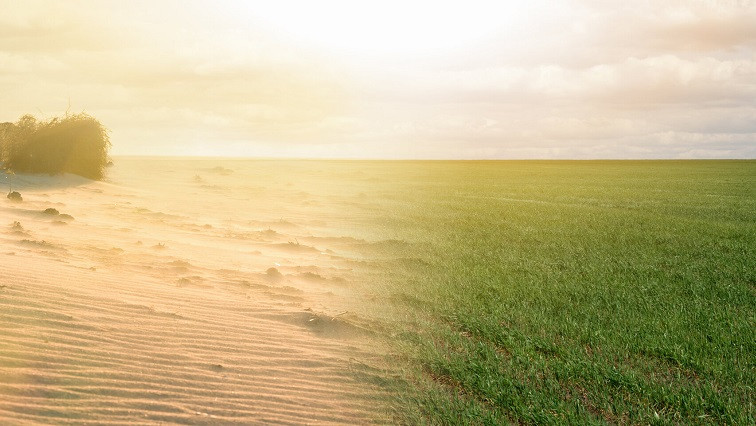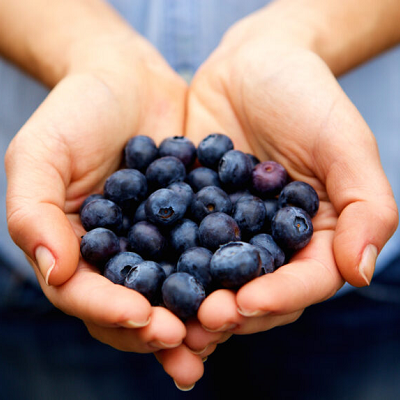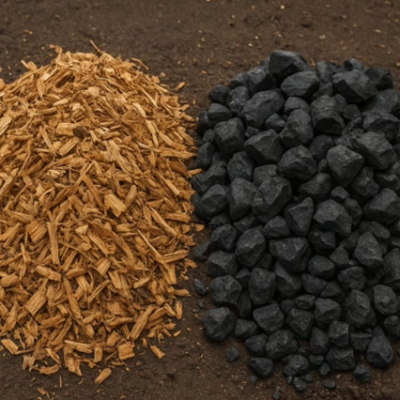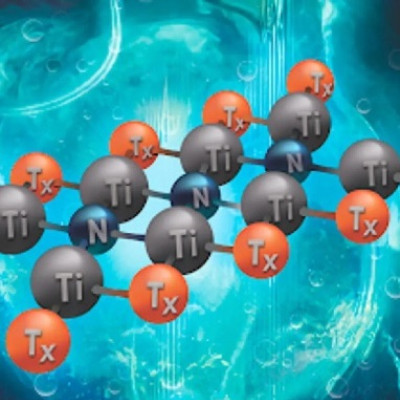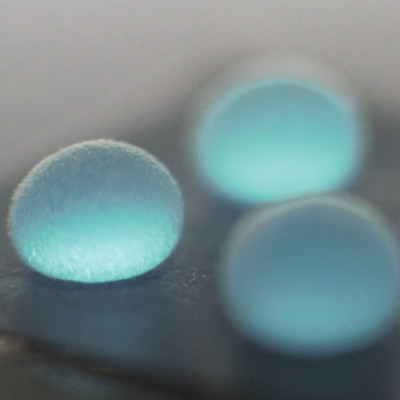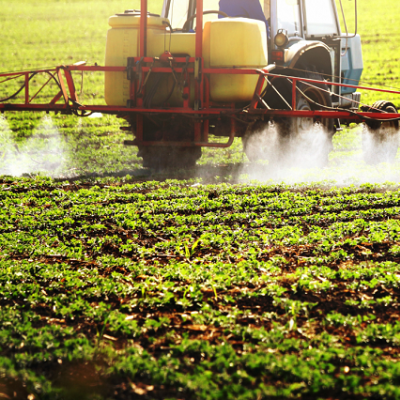In March 2021, just as countries across the world went into Covid-19 lockdown, a remarkable transformation neared completion in a corner of the United Arab Emirates. In just 40 days, a once barren plot of sand in this landlocked desert nation had become littered with ripe, sweet watermelons swelling under the Arabian sun.
For a country that has to import 90% of its fresh produce, it was an extraordinary milestone. The dry, inhospitable Arabian desert had been turned into a lush fruit farm with the simple addition of clay and water.
Except it wasn’t so simple – these melons were only possible with the help of liquid “nanoclay”, a soil recovery technology whose story began 1,500 miles (2,400km) west and two decades ago.
In the 1980s parts of the Nile Delta in Egypt stopped flourishing. Famed for its fertility, it had been a reliable place to farm for thousands of years despite its proximity to the arid desert. Its productivity had allowed the ancient Egyptians to divert their energies from subsistence farming to developing a powerful civilisation that produced such cultural feats that they are famed around the world thousands of years later. Yet, despite supporting communities in the region over the millennia, in the space of just 10 years or so, that fecundity faded.
Every year in late summer the Nile would flood, expanding onto the Egyptian delta plains before receding again. As scientists began to investigate what had caused the drop in land fertility, they discovered that those floodwaters carried with them minerals, nutrients and crucially, clay particles from the East African drainage basin that feeds the Nile, and deposited them across the delta lands. The clay gave the soil both its resilience and fertility. But where had it gone?
Rewind 10 years to the building of the Aswan Dam across the Nile in southern Egypt during the 1960s. This remarkable 2.5 miles (4km) wide structure was built to generate hydroelectricity and regulate flooding so farming could become more manageable and predictable. But it also stopped all that good stuff flowing downstream. A decade without this annual top-up, and all the fertility in the delta soils had been used up.
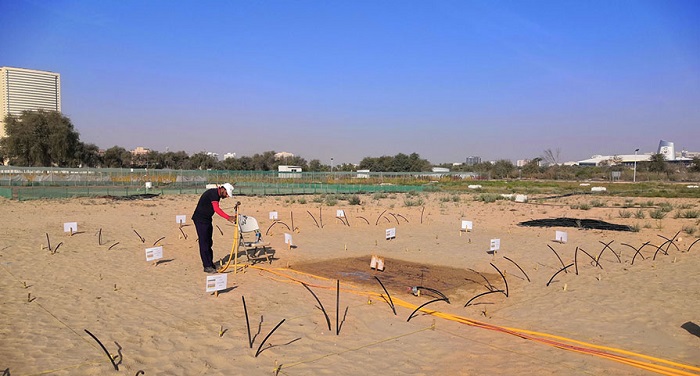
Global croplands have lost 20-60% of their organic carbon.
Once the soil scientists and engineers had figured out the problem, they also had the beginnings of a solution.
“It’s like what you might see in your garden,” explains Ole Sivertsen, chief executive of Desert Control, the Norway-based business that has developed the nanoclay approach. “Thin soils with little to them struggle to hold onto moisture or allow plants to thrive. The presence of clay in the right proportions can drastically change all that.”
Desert Control, in their words, plans to use nanoclay to take unproductive desert land “from sand to hope”.
Using clay to improve soils is nothing new – farmers have been doing so for thousands of years. However, working thick, heavy clay into soil has historically been very labour-intensive and disruptive to underground ecosystems. Ploughing, excavating and turning the soil also comes at an environmental cost as sequestered carbon is exposed to oxygen and so is lost into the atmosphere as carbon dioxide. Coupled with this is the disruption to the incredibly complex soil biome that comes with cultivation, as University of Edinburgh soil scientist Saran Sohi explains.
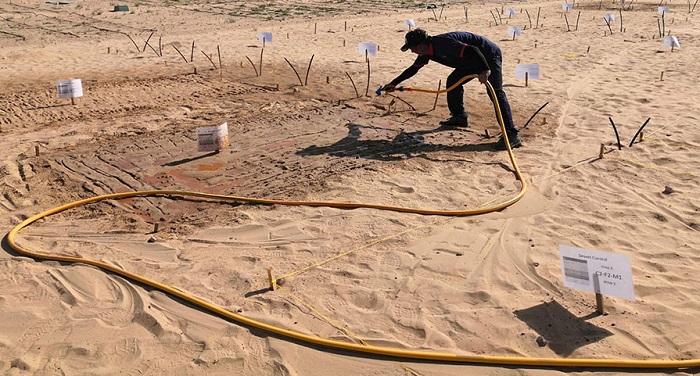
The clay is sprayed directly onto the ground before the plants are watered like any other irrigated crop.
“A key part of soil biology is a symbiotic relationship between plants and fungi in the form of mycorrhizae, fungal filaments which essentially act as extensions of the plant root system,” he says. “They are covered in microscopic hair-like structures called hyphae which are much finer than the plant's roots, allowing access to nutrients that it may not otherwise encounter. In that process the fungal filaments also connect the soil mineral particles, maintaining the soil structure and mitigating against erosion.
“Disrupting the soil by digging or cultivating breaks down these fungal structures which take time to regrow, and meanwhile the soil becomes vulnerable to damage and nutrients prone to escape.”
Clay can be a fickle beast. Too little and it has almost no impact. Too much, and the clay could form a waterproof crust on the surface of the sand or make compaction more likely. Years of trials followed, as Kristian P Olesen, a Norwegian fluid dynamics engineer, searched for a way of making a clay recipe that would easily mix with sand to turn it into life-giving soil.
“It is not a case that one size fits all,” he says. “Ten years of trials in China, Egypt, UAE and Pakistan taught us that every soil needs testing, so we can mix the right nanoclay recipe.”
Much of the research and development of the nanoclay solution has been dedicated to finding a carefully balanced thin liquid formula that can easily percolate through the tiny particles of local soil (hence the nano part), but does not drain so fast that it freely seeps out and is lost altogether. The aim is to treat the magic 10-20cm (4-8in) of soil that sits in and below the root zone of standard crops.
Fortunately, when it comes to mixing sand and clay, a handy bit of soil chemistry comes into play too, namely Cationic Exchange Capacity.
“Clay particles have a negative charge due to their chemical make-up, while sand grains are positive,” explains Sivertsen. “This natural polarity means that when they physically meet, they bind.”
The result is a 200-300 nanometre layer of clay around each sand particle that creates a snowflake-like formation. This increased surface area allows water and nutrients to stick to the sand and chemically combine with it rather than being lost as run off through the soil.
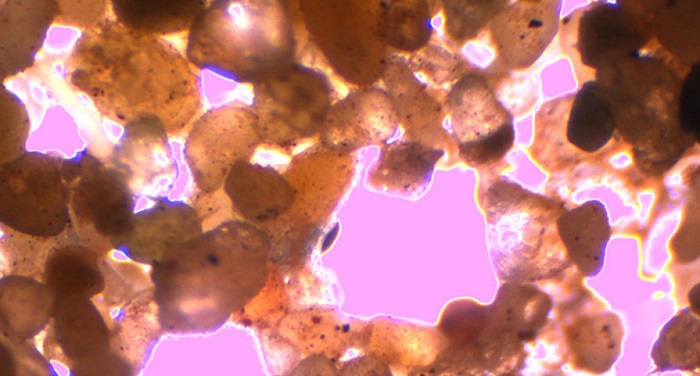
The nano-scale structure of the clay helps to retain water in the soil.
“The clay mimics organic matter in its functionality, helping soils retain water, and allowing the soil flora and fauna to gain a foothold,” says Sivertsen. “Once you have clay particles stabilising conditions and helping make nutrients bioavailable, you can plant crops within seven hours.”
While the technology has been in development for almost 15 years, it has only been set on the path to commercial scaling in the past 12 months after being independently tested by the International Center for Biosaline Agriculture (ICBA) in Dubai.
“Now we have scientific evidence for effectiveness, we aim to build numerous mobile mini factories in 40ft (13m) shipping containers with the ultimate aim of creating as much change as we possibly can,” says Sivertsen. “These mobile units will create liquid nanoclay local to where it is required, using clay from the same country, and hiring regionally.”
The first of these factories will be capable of producing 40,000 litres of liquid nanoclay an hour and will be put to use in city parklands in the UAE, as the tech can reduce water use by up to 47%.
Current start-up costs are around $2 (£1.50) per square metre, which is acceptable for small farms in the affluent UAE. But to have an impact where it really matters – in sub-Saharan Africa – Sivertsen needs to work out how to lower that cost. Most African farmers would not have the capital upfront for this treatment. The treatment also lasts for about five years, after which the clay needs a top up.
With scale Sivertsen says they can drive that cost down, ultimately aiming for around $0.20 (£0.15) per square metre. By comparison, the cost of buying productive agricultural land elsewhere in the world ranges from $0.50 to $3.50 (£0.38 to £2.65) per square metre, says Sivertsen. In the future it might be significantly cheaper to transform unproductive land than to seek out an established farm.
“Beyond that we are working with the United Nations Convention to Combat Desertification to support the Great Green Wall Project, an initiative to build a wall of trees and agroforestry to stop the expansion of the desert in North Africa,” says Sivertsen.
So while infusing clay into the sandy soils of areas such as North Africa and the Middle East, what about the rest of the world? Globally soils have lost 20-60% of their organic carbon, and nanoclay is suited to lift only sandy soils out of regression. What can you do if, for example, you have salty, non-sandy soils? Here, biochar may be your friend.
This stable form of carbon is produced by burning organic matter through pyrolysis, a process which produces hardly any pollutants such as carbon dioxide as oxygen is kept out of the combustion process. The charcoal-like substance produced is highly porous, lightweight and with a huge surface area. It is just what depleted soils need, says Sohi.
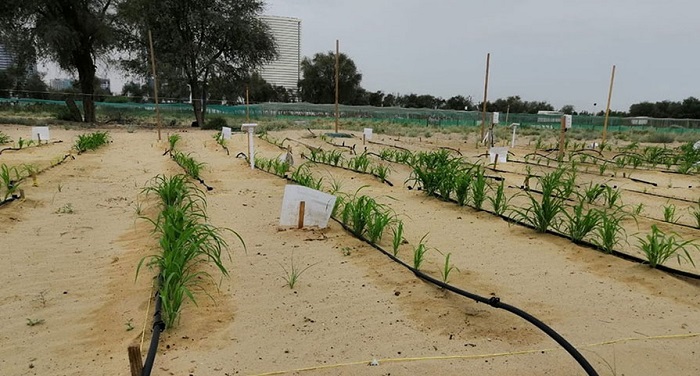
This plot in the UAE now grows corn in a place where little else grew before.
“The organic content of soil is always evolving, but a base level of stable carbon is present in a healthy soil,” she says. “Unlike how organic matter is constantly and rapidly turned over by microbial activity, biochar is stable carbon that helps the soil hold onto nutrients crucial to plant growth. It offers a fast-track way of introducing that stable carbon element which would otherwise take decades to develop.
“Biochar can facilitate plant growth through recovering the soil structure, especially in association with other organic matter, including the addition of compost.”
This, she says, can help in restoring land that lacks organic matter due to over-farming or those affected by mining or contamination, provided the toxicity is dealt with first.
Other soil recovery techniques include using vermiculite, a phyllosilicate mineral mined from rocks and treated with heat so that it expands. The spongy nature of the resulting material allows it to absorb three times its weight in water and retain it for long periods. Meanwhile, highly absorbent polymer beads can be placed in the root zone of individual plants, allowing for water uptake beyond their own weight for short periods of time. However both require soil cultivation for placement, which has its downsides.
Back in the UAE, communities living nearby have already benefited from the ability to turn the desert around them into fertile land. The arrival of the produce grown using nanoclay proved serendipitous as Covid-19 lockdown restrictions came in. Around 200kg (440lb) of watermelons, zucchini and a crop of pearl millet were produced in the 0.2 acre (1,000sq m) trial plot, and that food needed a home.
“Lockdown in the UAE was very strict and their imports plummeted, meaning fresh produce was unavailable to many,” says Sivertsen. “We worked with ICBA and the Red Crescent team to get the fresh watermelons and zucchini to individuals and families nearby. The aim was to test it all for the higher nutrition levels we suspect crops grown under such conditions may provide, but that will have to wait for the next trial plot.”
Read the original article on BBC News.

